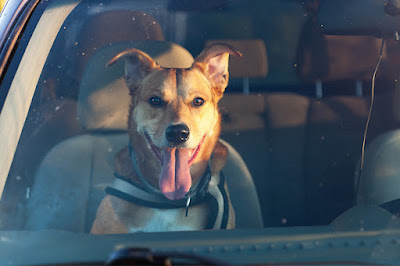Human beings are creatures of habit and repetition.
Any event that disrupts this repetitive schedule often turns into a stressor,
especially an event like moving to a new house, state, or country. Pets are like
their owners in this respect, wherein a sudden disruption of routine is likely
to stress them out. The good news is that with proper planning and a little bit
of patience, you and your pet are sure to have a smooth journey.Preparing Your Pet for a Long-Distance Journey
Unless you’ve done so already, the first step is to
acclimate your pet to travel and travel over shorter distances before you can
embark on long-distance pet travel. Since your pet can only fly or travel in an
IATA-accredited pet crate, you should first train them within the house before
gradually moving outdoors.
Once your pet is happy and comfortable inside their crate,
you can slowly start taking short trips in the car so they can get used to the
experience of travelling inside their crate. This process is not an overnight
one, so provide your pet with this training ahead of your planned travel time.
Aside from crate training, there's the matter of the
crate itself. You'll need to choose an appropriate crate based on the size of
your pet; such a crate should allow your pet to sit, stand, turn around, and
lie down comfortably. Depending on the mode of transportation you're taking to
reach your destination, you may need to plan.
Things to Pack for a Long-Distance Trip
The essentials of long-distance pet travel differ from mode to mode, as do the preparations. Food, treats, toys, a leash & harness, and a first aid kit are all important requirements if your move is more local than international. A blanket or soft toy or item of clothing that’s familiar to your pet can be used to line the inside of their crate, to calm them down and give their temporary crate a more homely feel to it.
Remember, the mode of transport should also be selected after considering the needs of your pet. A pet that is too young, i.e., under 3 months of age, will not be able to fly, so you'll need to arrange for alternative means of transport if you've just welcomed a new baby pet. Similarly, if your pet is elderly, it will require extra care during transit for a comfortable journey. Plan your pet's travel once you've considered such factors, so your pet has the best possible journey.
Land vs Air Travel
Different modes will require preparation. For instance, while rest and refreshment stops are managed by the airline when flying with your pet, you’ll need to plan them yourself when travelling by road, along with things like extra food bowls, dry food, road laws, and so on. Planning smoothens a journey immensely, so plan according to the mode of transport you end up choosing.
If you’re travelling by road, you will need to account for bathroom breaks and time spent walking your pet outside their crate. If your pet is prone to getting motion sick, these breaks will need to be more frequent. Hydration is equally important, especially if you’re travelling through a hot or humid region since most household pets cannot sweat like people do. Make sure never to leave your pet alone or locked in a car, especially on a hot day. The temperature inside a car can soar to the point of being fatal, so it is best to keep your pet within arm's reach.
Air travel is a little different when travelling with a pet. For one, your pet’s admission is at the airline’s discretion. Some airlines will let your pets fly with you, some will only allow pets to travel in the cargo hold, and others refuse to fly pets under any circumstances, so make sure to conduct your research before making any bookings. Air travel is far more secure and safer than its alternatives, but that also means it involves more documentation; vaccination records, health certificates, and more may be required. Make sure to keep your pet’s documentation handy, as it is more than likely you’ll end up needing it.
Schedule a Vet Check-Up Before Travel
Any travel with your pet is exponentially more
dangerous if your pet is sick or injured. As such, when planning to travel with
your pet over longer distances, you should always visit your vet. your vet can
help you with specifics of travel like a health certificate and vaccination
record and can also make sure your pet is fit to travel safely.
Remember to clear any travel or medical doubts while
you're there since your vet is a pet health expert and can advise you on
aspects of the journey like feeding when on the go. As a safety note, it is
crucial to remember that you cannot sedate your pet before travel unless
expressly recommended by your vet in writing. At altitude, sedation can prove
fatal as it affects regular bodily functions like breathing, heart rate, and
body temperature.
To Conclude
While there are various methods and modes you can use for pet travel over long distances, it is important to select the one safest for your pet. When in transit, the best thing you can do is be aware, vigilant, think ahead, and prioritize the comfort & safety of your pet. Proper planning prevents poor performance, so plan to ensure an enjoyable journey for all.
Looking for pet transportation? Need experts you can trust while travelling? Carry My Pet offers pet flight services for your comfort and convenience. Call 08908909020 or reach out to us at enquiry@carrymypet.com to make a booking today.




No comments:
Post a Comment